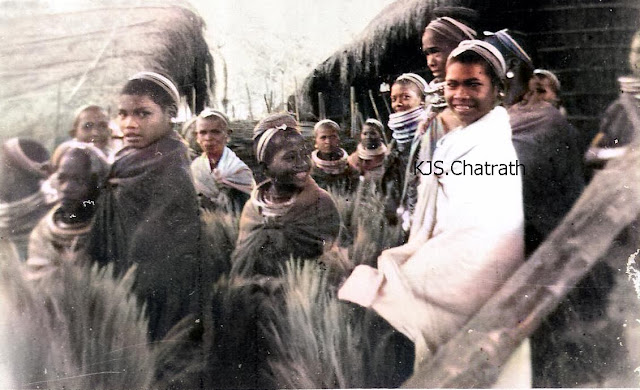'Khas Aam- ख़ास आम (Special Mangoes)' by K.J.S.Chatrath
And he went on to write ‘…Mangoes, when good, are very good. But of the many that are eaten, few are first rate. They are usually plucked unripe and plucked in the house. Unripe, they make excellent condiments, are good also preserved in syrup. Taking it altogether, mango is the best fruit of Hindustan…’
It is fashionable to do a lot of Ooh and Aah about alphonso mangoes. I for one am not fond of alphonso mangoes. In fact I do not like the peculiar almost stink like smell that it gives. I would prefer Langra and Chausa to Alphonso any day.
But my favourite are the desi mangoes or choosnay walay mangoes. The beauty of these mangoes is that each fruit tastes different from the other. Unfortunately the production of these mangoes seems to be on the decline. There are a large number of desi mango varieties- some with interesting names like zard ameen, surkha, chand gola, tuhru, mujjad ameen, ramkela, seb jannat, desi bambaiya, zardalu, tukami heera, deshi mitthu, sharifa, maldaha, haathijhul, aamil lamba, ajayab, surkha maliyara and sahed ki kuppi, just to name a few.
I was happy to see, the variety called the sahed ki kuppi (goblet of honey) or just kuppi in the market yesterday and promptly bought some.
Take a look:
Two personal anecdotes about mangoes before I finish. When I was a young kid, there used to be no refrigerators. Mangoes were usually chilled in a bucket filled with water and ice. My father would organise a special yearly treat for us. He would send a few kilos of mangoes to the local ice factory with a request to let the mangoes be studded into an ice slab . This slab would be brought home on a rickshaw and as it would gradually melt, mangoes would come out. It needed a little thawing as the mangoes too would be frozen, but it used to be an occassion, we 5 brothers and sisters used to look forward to during summers.
The
second story is from Orissa. I was posted in a district called Phulbani
for my Survey & Settlement training during summers. I was surprised
to find both sides of the main road lined up with mango and jack fruit
trees - fully laden with fruit. Further enquiry revealed that those
trees were got put by an English Collector who was posted there for two
decades. He used 'begar' or forced labour and made people to
plant and water the trees initially. Once the trees grew up and started
fruiting, then there was no problem of hunger in that tribal district.
One had just to go to the main road and pluck the fruits. Mangoes are
also cut dried and used during non-mango seasons. Interestingly that
Collector is locally remembered as 'Sukla Sahib' as he was was very lean
and skinny and looked almost dried up to the local inhabitants... ...
Mirza Ghalib, the poet par excellence was very fond of mangoes. When he was asked about his passion for mangoes, the poet is said to have replied,
“Aamo main buss do khubiya honi chahiye, ek meethe ho aur bohut saare ho.” (Mangoes need to have two qualities, they need to be sweet and there needs to be plenty.)!








Comments
Post a Comment